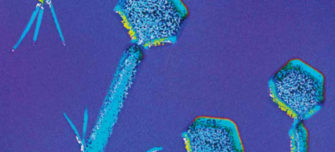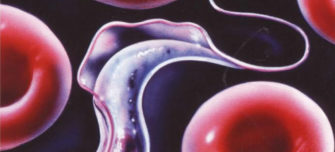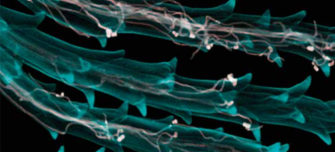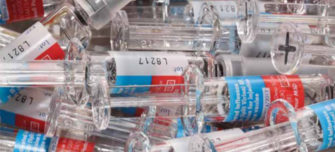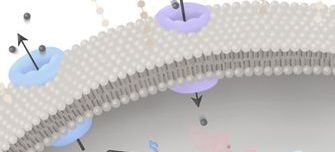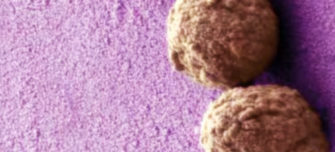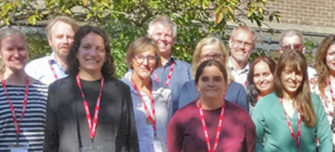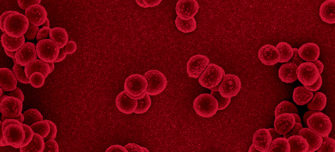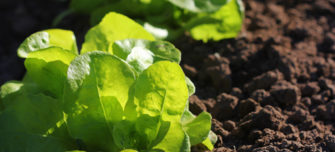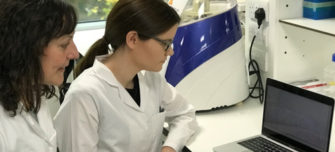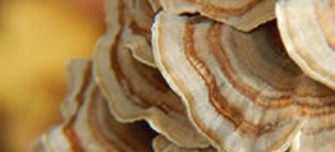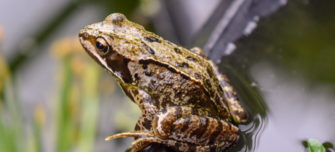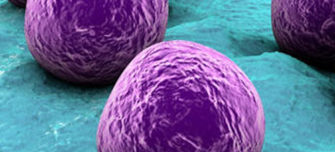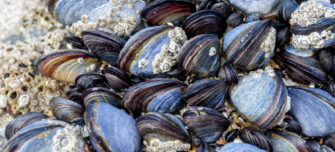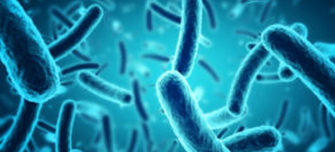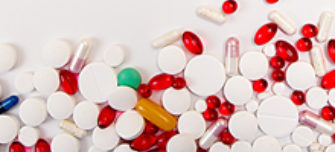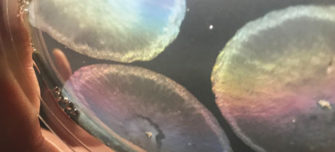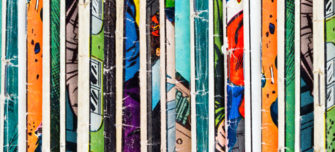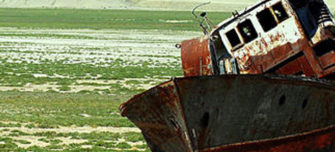Resources and further reading
-
Microbiology Today: Future Tech
Microbiologists and microbes are at the forefront of new invention and innovation, and the this issue of Microbiology Today focuses on 'Future Tech' – the pioneering work taking place in the field.
-
Microbiology Today: Microscopy and Techniques
The lead articles in this issue of Microbiology Today are on fluorescence microscopy, single molecules in microbial systems and the first microscopy laboratory manual.
-
Microbiology Today: What is Life?
This edition of Microbiology Today features articles on whether viruses could be considered alive; creating synthetic bacteria; and where the Archaea domain might sit in the tree of life.
-
Microbiology Today: Light
Articles in this Microbiology Today issue on 'Light' cover: the role of endosymbiosis and its impact on the evolution of eukaryotes; how a curious light-emitting host–microbe model is aiding scientific research; the way hosts and microbes interact using infrared spectroscopy analysis; and the effects of violet-blue light on antimicrobial methodologies and systems.
-
Microbiology Today: Eukaryotic microbes
In this issue of Microbiology Today, we explore the evolution of photosynthetic eukaryotic microbes, and how developing an understanding of parasite biology and genome sequencing information, may lead to a breakthrough to treat neglected diseases.
-
Microbiology Today: Mind-altering microbes
This issue of Microbiology Today, features articles on Toxoplasma gondii's mind control abilities and the hallucinogenic properties of ergot.
-
Microbiology Today: Microbial Tools
This issue of Microbiology Today focuses on the emphasis on the beneficial ways in which microbes can be utilised, in areas as diverse as construction, pest control and the disposal of radioactive waste.
-
Microbiology Today: Imaging
This issue of Microbiology Today focuses on the variety of ways that humans have been able to view micro-organisms, including some of the cutting edge methods of showing microbes in closer, and higher quality, detail than ever before.
-
New Frontiers in Microbiology Journal Collection
The ‘New Frontiers in Microbiology’ collection brings together articles on the ever-growing tree of life and synthetic biology.
-
Metals in Microbiology: journal collection
Guest-edited by Dr Jennifer Cavet (University of Manchester) and Dr Karrera Djoko (Durham University), this collection of keynote research articles will highlight research on metal-microbe interactions, bringing together advances in our understanding of how microbes handle metals, the utilization of metals in proteins and the importance of metal handling systems in host-pathogen interactions.
-
New frontiers in microbiology
As we have progressed through the 21st century, we have expanded and developed our understanding of how microbes are related to and interact with each other. This section of Microbiology Today considers the ever-growing tree of life, how we can study complex microbial communities to gain new insights and the possibility of discovering life on other planets.
-
Synthia: playing God in a sandbox
In this Microbiology Today article, synthetic genomics is explored and how Synthia became the biggest piece of DNA, ever crafted by humans to run a cell.
-
Sequencing the genome of Streptococcus pneumoniae
Whole genome sequencing has revolutionised many fields of study, not least microbiology. In this blog, Carmen Sheppard talks about her workshop on whole genome sequencing of Streptococcus pneumoniae in a public health reference laboratory.
-
JMM Editor's Choice: using genetics to identify new antifungal targets
This paper featured as Editor’s Choice in the Journal of Medical Microbiology, addresses how using genetics can help identify new antifungal targets and how this biosynthetic pathway is a promising candidate for novel therapeutics.
-
Harnessing soil microbes to enhance crop performance
A recently-isolated soil microbe could be used to modify crops and protect them against fungal diseases, researchers say. Researchers at the Agriculture and Food Development Authority (TEAGASC) have identified a novel bacterium which can modify plant characteristics and provide beneficial traits, such as resistance to diseases.
-
Activation of antibiotic production in Streptomyces venezuelae using co-culturing methods
In this blog, Megan Bradley discusses her research project on the activation of antibiotic production in Streptomyces venezuelae using co-culturing methods.
-
Exploring Open Data: The Importance of Sustained Sequencing
Open data has the potential to revolutionise microbial genomics. But in practice, many of the benefits of this technology remain untapped. So how can we achieve greater data sharing?
-
Signalling in the symbiotic life cycle
This paper was previously chosen as Microbiology’s Editor’s Choice of the month. It focuses on iso-propyl stilbene as a life-cycle signal.
-
Foraging for alternative antimicrobials
Researchers in Northern Ireland have been investigating the potential of mushrooms and toadstools to treat an infectious lung disease.
-
Zombie fungus: how does this not so fun guy synthesise a cancer drug?
Cordycepin is a metabolite produced by members of the Cordyceps genus, more commonly known as ‘zombie fungus’. As well as being an important metabolite in the infection process, cordycepin has anti-cancer properties.
-
Using frog foam to deliver antibiotics
Researchers from the University of Strathclyde have analysed frog foam, showing that it is highly stable and capable of taking up drugs before releasing them at a stable rate.
-
Get into the groove: Tackling antimicrobial resistance with synthetic genes
In synthetic biology, micro-organisms are able to synthesis complex molecules far more easily and efficiently than organic chemists are able. However, they may not do so naturally, requiring a degree of genetic engineering, as we explore in this blog.
-
Hold tight: A mussel-inspired 'living glue'
Many aquatic animals spend much of their lives stuck to surfaces that can include rocks, ships or even whales. Limpets and sea stars, for example, use a form of adhesion that allows them to move on the surface they have colonised, but which makes them very hard to remove from that surface.
-
‘Hypervirulent’ disease a burden on aquaculture
Researchers have been using a combination of probiotics and vaccines to try and reduce the spread of a deadly fish disease.
-
Can we evolve our own antimicrobials?
Our antimicrobials are slowly being rendered useless. Could it be that we have been producing outdated antimicrobials, while the organisms that naturally produce them have been continuously adapting and changing them? Learn more about this research in our blog.
-
Better, faster typing of Salmonella strains
A new method for classifying Salmonella strains has been developed by scientists, giving faster turnaround times and greater reliability. Salmonella strains are notoriously difficult to identify, or type; however new research suggests that looking at the sequence differences in three genes, present in all Salmonella strains, results in more accurate, faster discrimination.
-
Looking into nature for novel biofilm-modulating agents
Antimicrobial resistance (AMR) is one of the most difficult problems we face. Scientists are increasingly turning to nature to find novel antimicrobials and agents to help in the fight against AMR. Dr Georgios Efthimiou from the University of Hull is looking for novel agents that can prevent biofilm formation, a phenomenon that can make infections incredibly difficult to treat.
-
Modifying Permeability of Salmonella Microcompartments
This paper, titled ‘Engineering the PduT shell protein to modify the permeability of the 1,2-propanediol microcompartment of Salmonella’ was chosen as Microbiology Editor’s Choice of the month.
-
Microbe Talk: MicroNews October
In this episode, we discuss deadly fungi, the flu vaccine and how scientists are making carbon fibers out of algae.
-
Microbe Talk: The Microbial Apocalypse
Imagine waking up tomorrow morning to find out that every bacterium and every archeon on the planet had suddenly vanished. What would happen? In this Microbe Talk podcast we talk to Dr Jack Gilbert and Dr Josh Neufeld about 'The Microbial Apocalypse.'
Image credits:
SPL/Dr Harry Fisher, Visuals Unlimited
SPL/Tony Craddock
SPL/Sinclair Stammers
SPL/John Bavosi
Wellcome Images/Anna Gordon, Fernan Federici and Jim Haseloff
iStock/debararr
Carmen Sheppard
Megan Bradley
iStock/ClaudioVentrella
SPL/Dr P. Marazzi
SPL/Dennis Kunkel
SPL/Thomas Deerinck
SPL
iStock/Vaivirga
iStock/ErikAgar
Thinkstock
Jin Hong
iStock/WendyLove
iStock/ClaudioVentrella
iStock/CarlosCastilla
iStock/Dr Microbe
iStock/Magic Bones
iStock/ClaudioVentrell
NASA

